Gunfighting in Utah
A three day recce carbine course with Buck Doyle.Gunfighting in Utah
A three day recce carbine course with Buck Doyle.More than 7,000 feet above sea level in the red rock landscape of Teasdale Utah, off in the distance we spotted a small dust cloud bee-lining its way towards the group at The Lodge at Red River Ranch. A mixed bag of shooters, some military and some civilian, were waiting there outside the Lodge, ready to learn some varsity-level shooting skills from one of the top industry experts. A Jeep Wrangler took shape just ahead of the rising dust. It pulled up in front of the Lodge, and the dust arrived just after it. Before it could settle, Buck hopped out of his Jeep, grabbed two breakfast tacos, and immediately made his way down to the classroom. No fanfare, no nonsense, and day one of Buck Doyle’s 3-day “Recce” Carbine Course had officially begun.
In March, some folks from Magpul journeyed to Teasdale and participated in a three-day recce carbine course being taught by Buck Doyle, who is one of the most sought-after instructors in the nation. It’s not his YouTube channel or Instagram account that has made Buck so popular; it’s the fact that he’s been-there-and-done-that and is able to distill many of the most important aspects of his experiences and shooting into courses delivered in a way that connects, makes sense, and sticks with you. After serving 21 years in the Marine Corps, with 17 of those in Special Operations units, he retired as a Master Sergeant with multiple awards for his expertise in combat, including the Bronze Star. Leaning on his extensive real-world experience in combat zones in the Middle East, Africa, and Asia, he founded Follow Through Consulting and now offers training and consulting to military, law enforcement, some pre-qualified civilians, and the occasional cinema and television clients. Buck conducts most of his courses in Teasdale, plus a few other different courses in Mattawa, Washington and at Q Ranch in New Mexico. While he runs some bolt-action and pistol-based training, the bulk of his teachings revolve around the recce rifle setup and gunfighting in general.
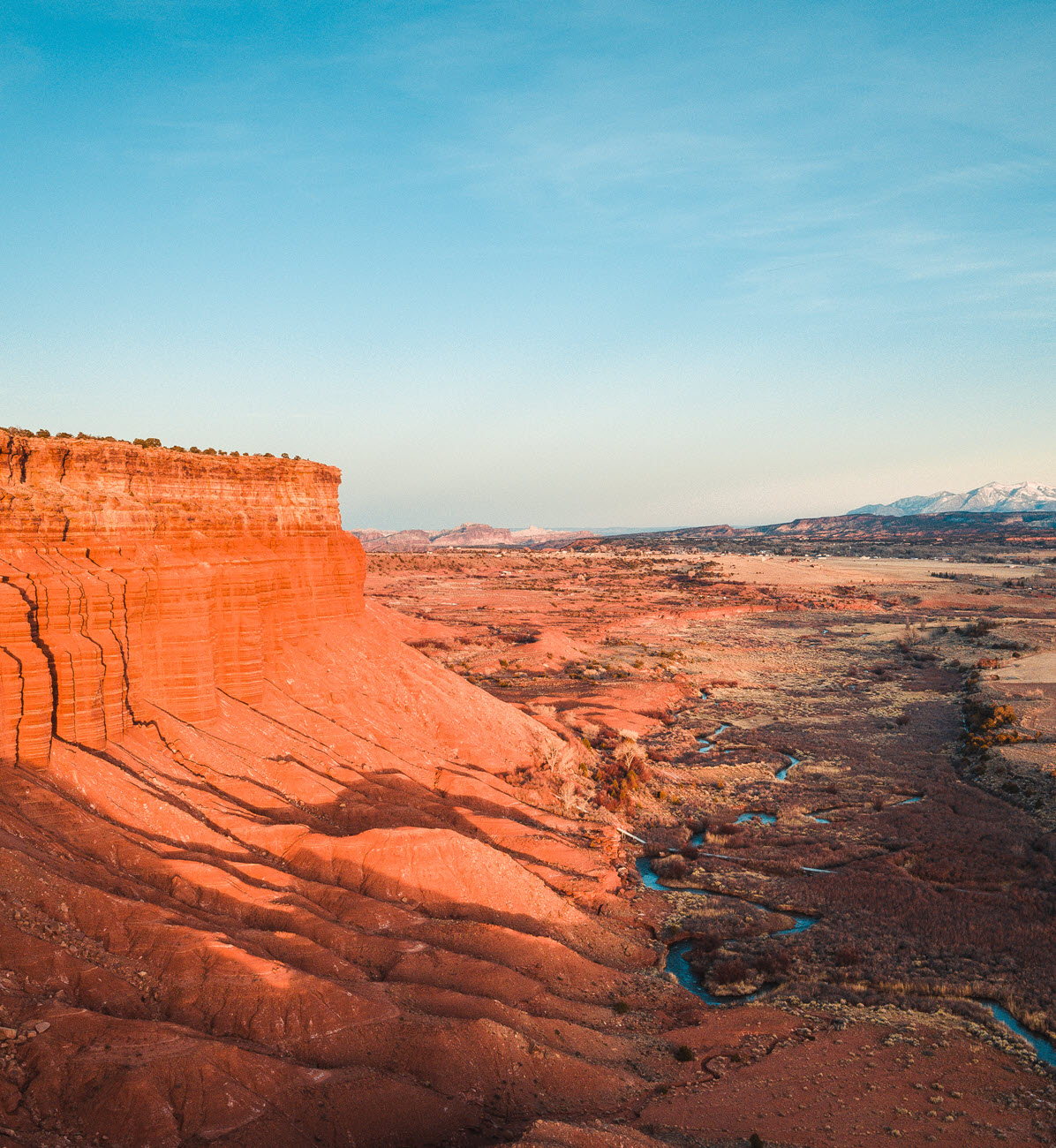
For those unfamiliar with the history of the recce rifle, the short story is that it never was a formal designation within the military. “Recce” is British slang for reconnaissance, and the rifle itself came about with the intent to create a capable general purpose weapon; basically, an M4 with the ability to reach out further while maintaining its lighter weight and close combat capabilities. The Mk 12 Special Purpose Rifle, in service with the Navy until 2017, was a designated variant of what SOCOM guys were doing early on, but differed in barrel length and a few other specifications. You can see the influence of the recce rifle throughout modern AR culture with the popularity of the “do-it-all” rifle. Knowing the purpose behind a recce rifle, the natural and diverse location of Teasdale makes perfect sense as the spot for a lesson on the inconsistent variables of real-world gunfighting. With constantly changing windage, different elevations, and several different types of terrain, Teasdale allows training that a square range just can’t – and Buck takes full advantage of this.

You’d be hard-pressed to find a more straightforward individual than Buck, and his training does not differ. While his resume certainly speaks for his authenticity, it’s his mindset and approach to learning that separates his training from others. This was evident right from the start of day one, which consisted of a classroom portion that included introductions, a safety brief and an overview of the gun fighting tenets, as well as what to expect as the class progressed. Buck was quick to inform students of his “Buckisms,” or those rants that would present themselves more frequently than not throughout the entirety of the course. Like Stephen A. Smith firing-off on Sportscenter, but with guns. Drawing from his time in the Marines, the military tenets of shoot, move, and communicate serve as the building blocks to Buck’s course and the mindset he espouses for when and if you ever find yourself in a gunfight. While they may seem obvious, a high pressure situation such as a gunfight disrupts any sense of calm thinking, and having the ability to fall back on the basics and your training is what it takes to make it out in one piece. That being said, there are a lot of things to consider that fall under the “basics.” These include considerations about the gunfighter, the environment, and the rifle that all fall under these three main points that Buck covers throughout the course of the training session.
Transitioning from the classroom to the range, the first thing the group did was confirm their zero. Students in Buck’s classes are expected to have a proficient knowledge of their weapon system and their optic before entering the course. That being said, they were introduced to Buckism #1: “If you don’t know how to use your shit now, you will by the end of this course.” Confirming zero was very quick, with each student taking two shots, and virtually all were on target right away. With elevation varying between 7000-7600 feet on the course, the increase in density altitude caused some confirmed zeros to be as much as two inches higher than their home location.
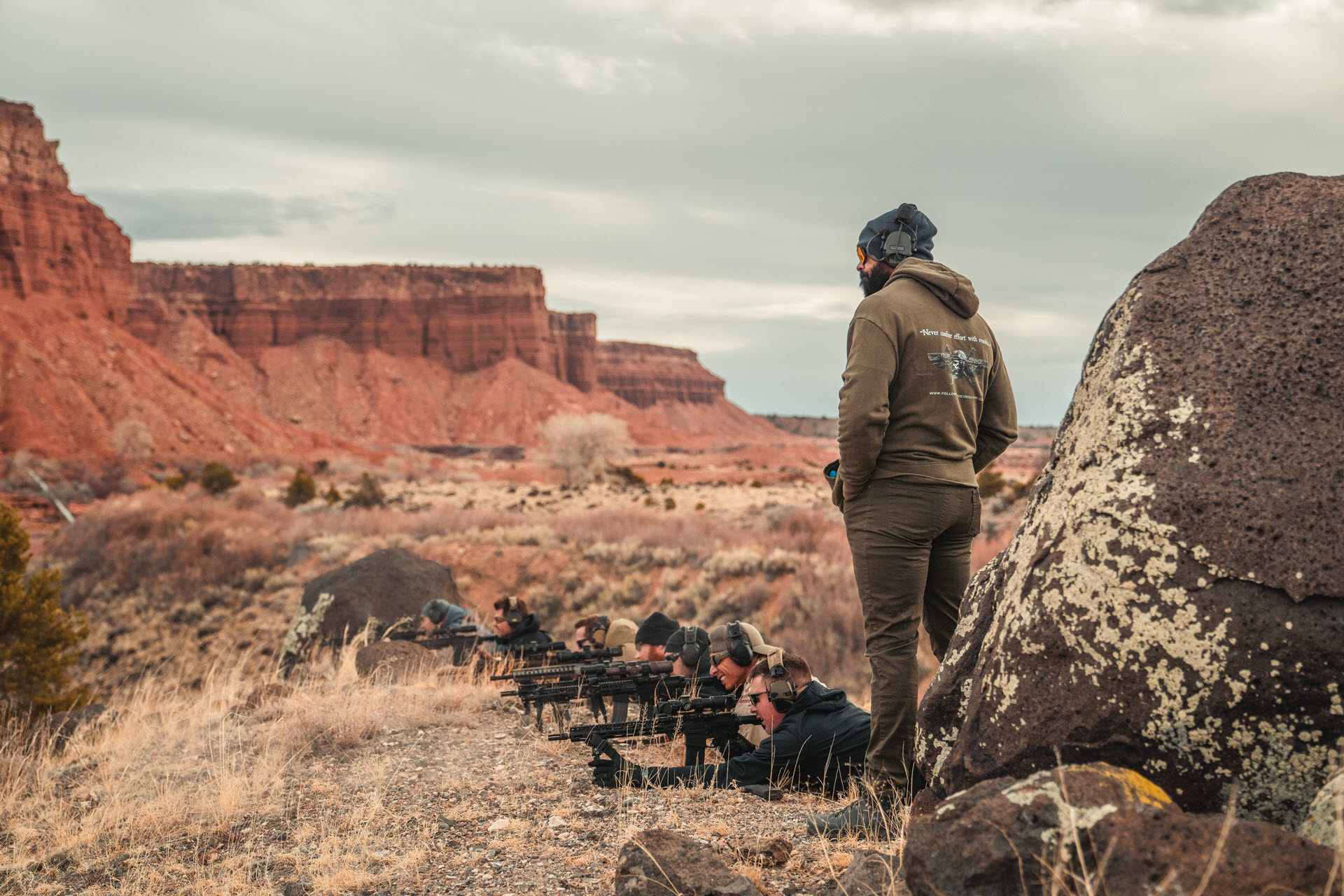


With their zero confirmed, the group moved to a new spot for the first exercise, which was centered around prone shooting. Accustomed to shooting on the relatively flat terrain of Texas, our shooters found things to be drastically different when the multiple layers of elevation were laid out in front of them. Targets ranged out as far as 500 yards on the first day, each spray painted with one of a variety of colors and littered across the changing terrain among scattered granite outcrops, lava boulders, white willows, shrubs, and the ubiquitous red dirt. A large mesa wall with a river flowing at its base served as the backdrop. The willows, dirt, and shrubs came in handy for reading the wind and making adjustments by looking for debris from their previous shot. Following the prone shooting and a short drive down the road, the students were introduced to some barricades for more positional work. Constantly changing positions was a game changer for most, allowing the course to continue to build on what was learned in the previous static prone exercise.

Along with barricade work, weapons carriage was a big consideration in these drills. Buck is very insistent on keeping aggressive control of your firearm while moving, overlapping your hand (shooting finger included) with your palm down over the handguard. This allows a more athletic range of movement and helps to minimize negligent discharges, all while keeping the muzzle pointed down at all times. The barricade work was slow and methodical, allowing the shooters to understand how much cover they had and actually needed to use instead of rushing into a poor shot. They would stay behind cover, identify the target by reading the landscape before taking the shooting position for a continued engagement. At least five hits were needed in this exercise to be able to move on. With a few rounds of barricade work and the shooters seeing better and better results in each one, the first day in Utah wrapped up.
While our time in Utah was spent primarily soaking up the knowledge Buck was dishing out, we couldn’t help but take in the scenery a bit outside of training. You just couldn’t take a bad picture out here, no matter how bad you were with a camera. The Lodge at Red River Ranch is really something special; backed up against a red rock mesa, the lodge itself is reminiscent of an old hunting cabin, but outfitted with the comfort of a modern resort. Family run, incredibly hospitable, this was the perfect spot to come back to after running drills all day. Most of the land around the lodge is private, although there are some BLM plots scattered around. Buck made it a point to remind the students to close every gate due to the small herd of bison he helps tend to on the land; there are two bulls in particular that love to tear up his training courses if something’s left open. Several areas serve as a canvas where Buck likes to set up steel to experiment with, setting up new and challenging scenarios for training purposes. If you do a little bit of looking around, you’ll spot a few painted targets hiding among the landscape.

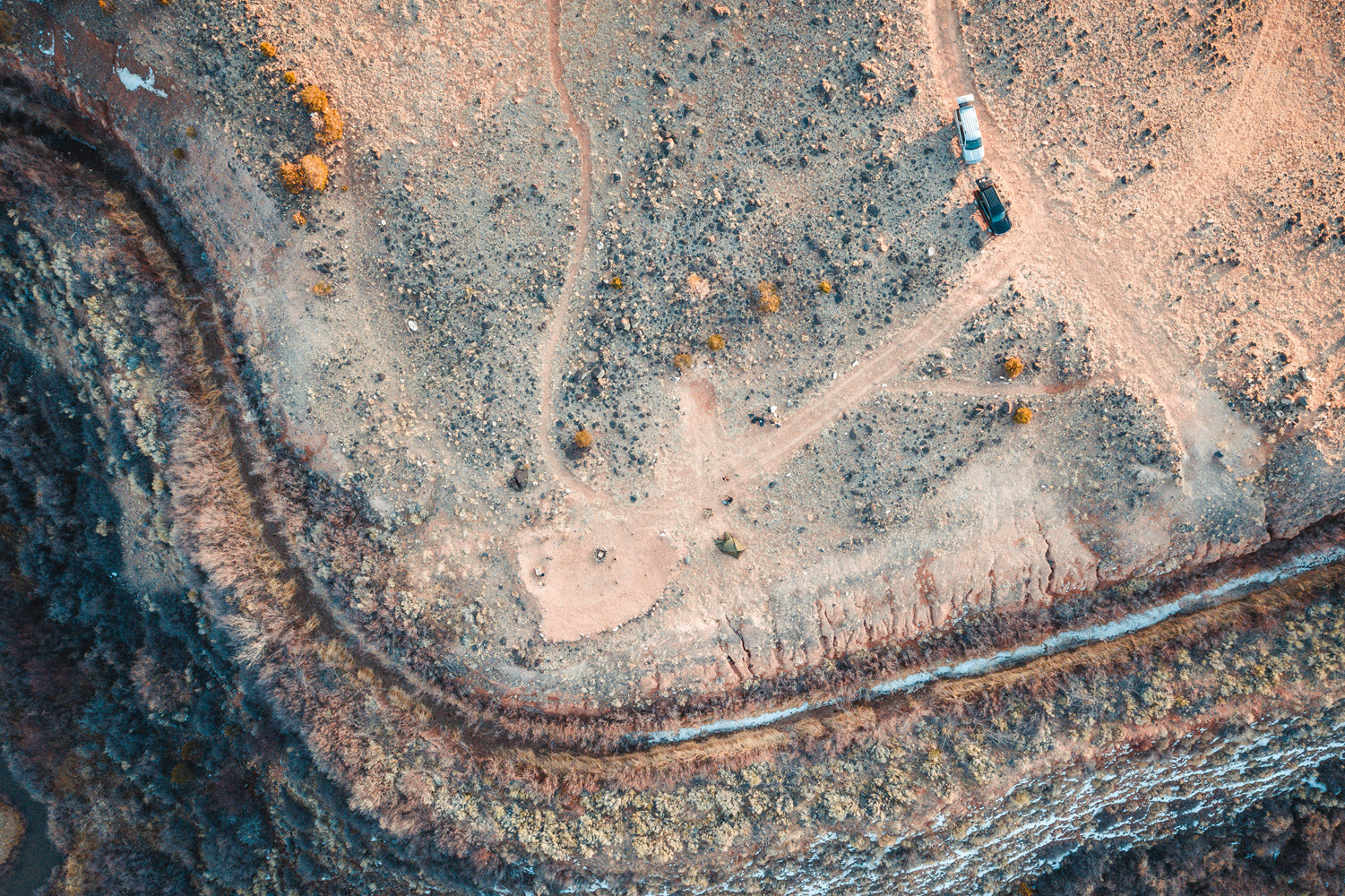

With the fundamentals established on day one, and after grabbing a to-go omelette from the lodge kitchen, the class was set to continue at a more rapid pace the second day. The students were introduced to more mobility and the practice of establishing points of domination or, to put it into a more-Buck-like way – finding the best location to not get shot. Every drill moving forward through day two and three builds and evolves off the previous one. So what began with single target shooting in the prone position evolved into multiple target engagements, then onto barricades and into movement between cover – this is where that idea of establishing a point of domination came into play. The main takeaway from moving in between cover was not to rush it. After securing yourself behind the first cover point, identifying and then engaging the target, Buck pointed out that rather than rushing to the next point and risking an unforeseen mistake, it was vital to remain securely behind cover until you’ve established your route to the next cover point. This meant making sure your gear was accounted for, establishing what area would set you up in a dominant position versus your target, and reading the terrain leading to that spot before making your move. This helped ensure the safest and most effective movement you could take against any enemy combatants.
Day three continued right where day two ended, with a little more speed. Convoying to the other side of the property across the highway, the terrain changed from red dirt to green brush and we found ourselves at the base of a decently-sized hill. Day three would be split among three different scenarios, moving up the hill engaging multiple targets, moving around a fort-like structure engaging targets as a group, and engaging targets while moving forward, closing the distance with each one. The focus of the last day was to incorporate everything learned from day one and two while completing these drills at an elevated heart rate (thanks to running up and down hills) and to understand your limitations.
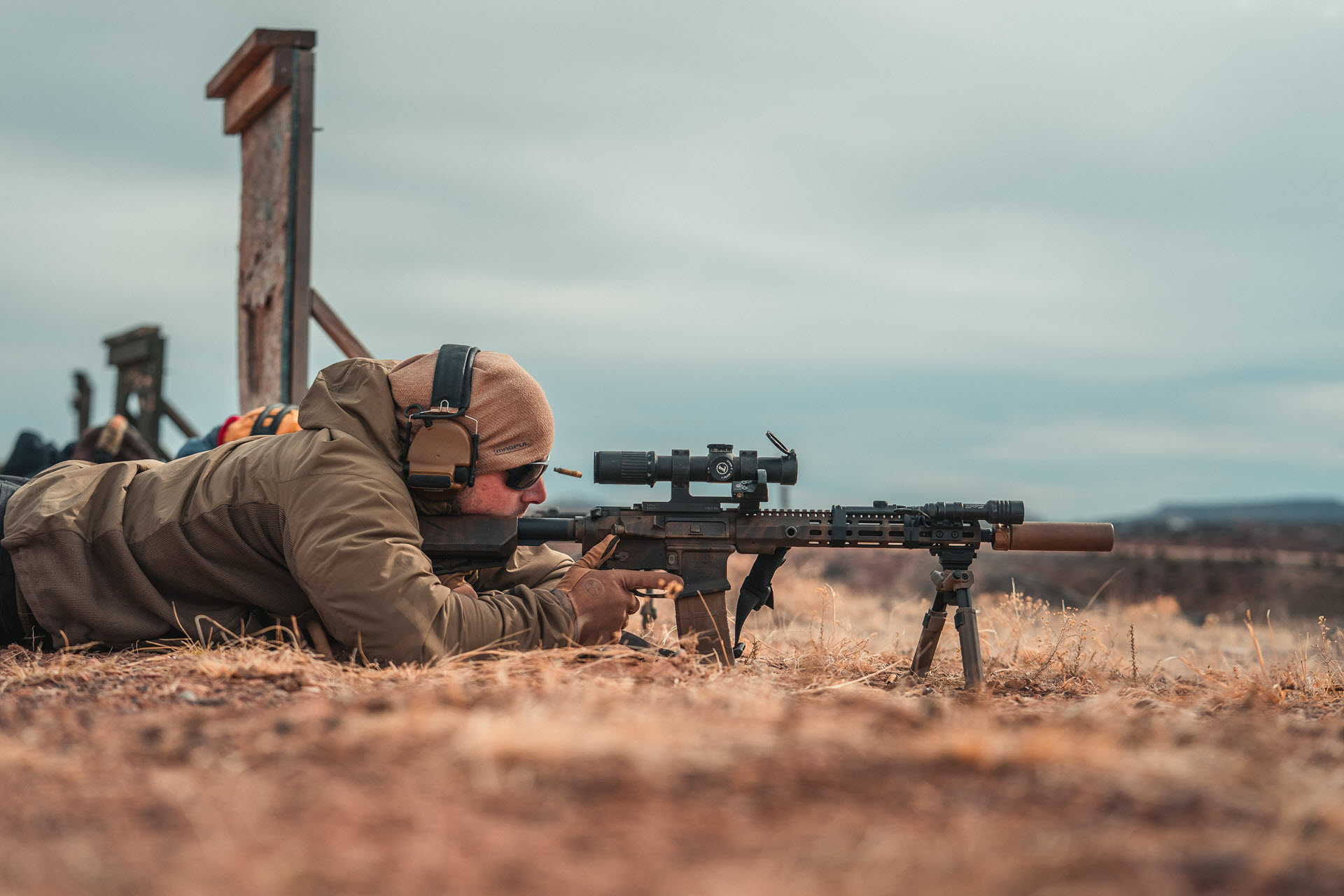
Just because the shooters were to move at a faster pace didn’t mean they could rush through the drill. Each move was still intentional and planned – this was the point of having each drill build upon one another, to hammer down the basics until they were second nature. In the fort area, the shooters participated in a “conga line”-like drill, following each other through five different positions while simultaneously engaging targets down range. It was important for them to be aware of each other’s movement; when one moved, the next in line would identify their route and follow once it was clear. Operating at a higher heart rate, in elevation, on unfamiliar terrain, it was important to learn where your limitations came into play. With these conditions, it was easier to lose focus on the task at hand and cut corners, and moving through the more technical terrain, the percentage of students making mistakes was a lot higher – which isn’t good during a real gunfight. This was the apex of the course; not only being aware of your surroundings and moving through them as efficiently as possible, but also staying mindful of your current capabilities, and making sure you don’t make a costly mistake.
With the course wrapped up, it was time to head back to Texas. While we hoped we could have accidentally signed up for his month-long training course (there’s not one) and gotten to stick around longer, the short time we spent out here was invaluable. To be sure, there are some great courses and instructors out there, but few offer the takeaways that Buck’s do. While his course worked through plenty of mechanical work such as reading impacts, making adjustments on the fly, and using correct weapon carriage and footwork through treacherous terrain, the lightbulb moment from the weekend came from Buck’s focus on mindset. Moving fast isn’t useful if it gets you shot. It takes complete understanding of your environment and yourself to be efficient and make it out of a gunfight. Or, better said by another Buckism, “Never confuse effort with results.”

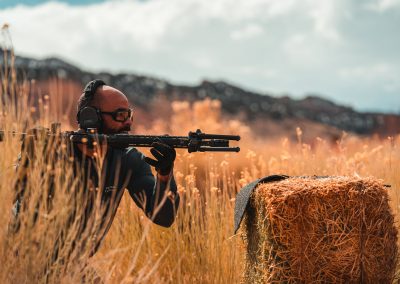



Sounds great
If I weren’t a Septuagenarian, I would be ready to go today.l I’m afraid that my joints wouldn’t take the abuse.
Finally, a great no nonsense rifle course.
Wow, that looks like a great course. What’s the recommended ammo count for participants to bring along?
Also, this is a very well written, well-made article and video promo. All very professional looking.